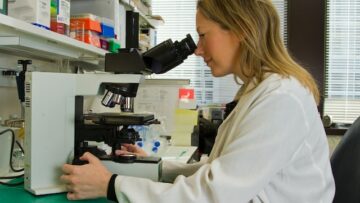Policymakers around the world face the common problem of using
expertise and assessments in the policy-making process. The state needs basic information about the society it governs, how its current policies are implemented in practice, and the availability of alternatives, as well as the possible costs and consequences of certain actions. The state can obtain this information from a variety of sources, ranging from academic universities to research centers and international agencies.
In developing countries, such expert assessments are often lacking or are poorly conducted. The form and presentation of such assessments are not sufficiently effective to make timely, adequate decisions. In turn, in developed countries, the political leadership of the country faces not a shortage of information, but an overabundance of it. The demand for information as a means of making political decisions has significantly helped the development of independent research centers known as “think tanks”. Information and expert assessments provided by think tanks are an important element in the development of modern civil society.
Peculiarities of the activity of think tanks in the United States
James McGahn, an expert on think tanks, notes that the U.S. tends to rely on expertise outside the government. This originates from the period of formation of the American republic, when a decentralized system of government was created, in which power is not concentrated in one hands, the branches of power are separated from each other. Nowadays, this kind of expertise is of enormous importance in political decision-making.
“Big, pluralistic America is the noisiest politically debating society in the world, where different voices and opinions about the path the country should take are in the air. In such a democracy, where everyone has a say, every political faction seeks to sway Republicans, Democrats, leftists, rightists, centrists, lobbyists, journalists, scientists, religious scholars, and academic centers.
The science centers bring dissonance, diversity, even a kind of cacophony. They are the basis of this heated debate. This kind of cacophony of voices that arises in American society during the political decision-making process can be deafening. But this is how a system works that yields significant results in the interaction of various institutions, where think tanks play a central role. James McGahn says that in the U.S., “these are institutions focused mainly on policy, not academic research, analysis, expertise on foreign and domestic policy issues to inform policymakers and the public decision-making process. The key task of research centers is to create mechanisms used in the development of a specific policy strategy, and they formalize their research in the form of reports, articles, and reports to policymakers.
A key element in the activities of science centers in the United States is collaboration not only with policymakers, but also with the media and the public. Every scientific center that seeks to influence Congress and the president must have a strategy for disseminating and promoting its views, especially through the media: newspapers, magazines, television, and the Internet. Today in the U.S. every day on radio and television one can hear the opinions of experts from various centers speaking out on topical issues of domestic and foreign policy. Research centers in the U.S. are financed from various sources: private individuals, corporations, foundations, and, less frequently, the government. In Europe and other developed countries, funding is provided by governments, which affects the work of the centers and determines their dependence on the latter.
There are some important differences between research centers in the United States and other parts of the world. The first is their number: there are 6,480 worldwide and 1,816 in the U.S. of which 393 are in Washington. Such a concentration of research centers in the capital is understandable, but many states have research centers, especially at major universities (Harvard, Yale, Stanford, etc.). The decentralization of the U.S. political model is reflected in the nature of the “think tanks” themselves.
Another distinctive feature is funding – its size – as well as the number of employees in the centers. For example, the annual budget of the Heritage Foundation is forty-eight million dollars and that of the Brookings Institution is sixty million dollars.
Science centers in Europe have smaller budgets. Importantly, the diversification of financial flows suggests a high degree of independence for these institutions. According to a number of experts, science centers in the U.S. influence political decision-making to a greater extent. This is, in particular, due to the cyclical process, when scientists working in research centers, with the arrival of this or that administration become its members or employees and have the opportunity to put their theories into practice. After the change of the apparatus of power, they return to the expert community, where they continue their research work.
According to American experts, the political mechanism in the U.S. is associated with a constant flow of personnel from research centers to the civil service and back. For example, John Bolton of the American Enterprise Institute became a permanent U.S. representative to the United Nations under the Bush Jr. administration. Kim Holmes, who works at the Heritage Foundation, was assistant secretary of state under the Republicans, and now works at the Foundation again. Zalmay Khalilzad, a former U.S. ambassador to Afghanistan, Iraq, and former employee of the RAND Corporation, joined the Center for Strategic and International Studies after his government service. Moving from one center to another is not uncommon for a specialist. One of the most notable examples is the career of Secretary of State George Shultz, who came to the administration from the Hoover Institution and returned there after leaving his post. In the Clinton administration, we can think of Richard Holbrooke, former U.S. ambassador to Germany and architect of the Dayton Peace Accords, then at the Council on Foreign Relations. James Steinberg of the Brookings Institution became an assistant to Secretary of State H. Clinton.
Many centers enjoy a high degree of independence in their activities, since they mostly do not receive funding from the government and, thus, are not formally associated with the government and any political parties. The exception is the Institute for Progressive Politics founded by Bill Clinton. In Europe and other parliamentary democracies, academic centers are closely linked to political parties. In the U.S., there is a certain belief that the best government is the one that governs the least. That is why the role of science centers in the U.S. is so significant: the prevailing private capital there helps create new “think tanks.
The role played by think tanks in the U.S. is multifaceted. They perform the following tasks:
- mediating between government and society;
- building relationships of trust between society and government institutions;
- acting as an independent and informed participant in public debates;
- identifying, formulating and evaluating policy problems, proposals and programs;
- transforming ideas and emerging issues into the subject of political debate;
- interpreting issues, events and policies for the electronic and print media, which contributes to public understanding of domestic and foreign policy issues;
- Creating a forum for the constructive exchange of ideas and information among the main actors of the decision-making process;
- training and providing experts for the legislative and executive branches of government;
- providing ideas alternative to the established, standard, traditional procedures of the bureaucratic system and the activities of traditional businesses.
According to D. Abelson, research centers, as learning structures, like teachers in a school that shape the minds of their students, seek to shape public opinion and influence the choices and preferences of political figures and leaders.
Speaking of the significant role of research centers in the U.S., I would like to give a number of specific examples. When the Obama Administration came to power, the U.S. House of Representatives voted for a bill requiring that only steel made in the United States be used in any construction on American soil. The Petersen Institute, which deals with the world economy, believed that this decision would be wrong and lead to international trade wars. However, the law was soon approved. But the experts of the institute criticized the decision, a strategy to counter this version of the bill was developed and meetings were held with members of the Obama administration to explain the Institute’s position. Two weeks later, the bill was significantly improved. The experts argued that the decision would violate U.S. trade regulations and would damage the reputation of the United States severely, thus negating the profit that would be made. The Petersen Institute was directly involved in changing the approach to this issue.





